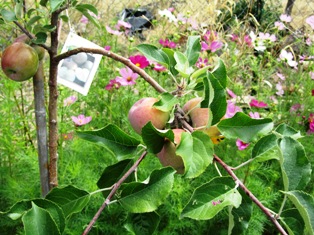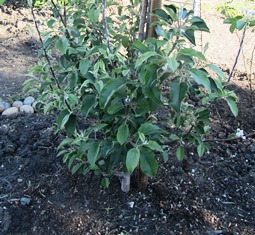Mulching Do’s and Don’ts
An area of the garden where we planted apple trees two years ago had become so overgrown with weeds that it required many hours of weeding.
Following the weeding, we added organic mulch. I like to create an area as large as the canopy of the tree around the base of the tree (free of any plants or weeds) so that I can easily feed and water our fruit trees throughout the growing season. Then I reapply the mulch.
Mulching with organic material makes it easier to prevent the germination of weeds, facilitate watering and feeding of the fruit trees, encourages the proliferation and activities of earthworms (good for improving the soil), and keeps the soil moist (reducing the amount of water needed).
When adding organic mulch to the top of the soil, the keep in mind the following tips.
1. Do dig in high-nitrogen products such as chicken manure, blood meal, or cottonseed meal into the soil around the plant or tree before layering atop the soil low-nitrogen mulch such as bark, wood chips, or decayed sawdust material.
2. Do pull mulch back from over bulbs and perennials in the spring to facilitate a faster start to their warming and growth cycle.
3. Be aware of snails and slugs that can hide in damp mulch. Try placing a layer of newspaper where you think the snails and slugs might be proliferating. Put the paper down on the soil at night and retrieve it before sunup when you can turn it over to see the pests clinging to it. Dispose of the newspaper in the garbage.
3. Don’t mulch too close to the stems of shrubs or trees s since wet mulch and cause stem rot; ensure that the mulch is at least an six inches away from a shrub stem or tree trunk.
4. Don’t pile mulch too deep; doing so encourages rodents such as voles, rats, and mice to use the mulch for nests.
 Facebook
Facebook Goodreads
Goodreads LinkedIn
LinkedIn Meera Lester
Meera Lester Twitter
Twitter




